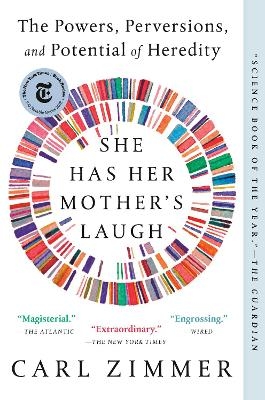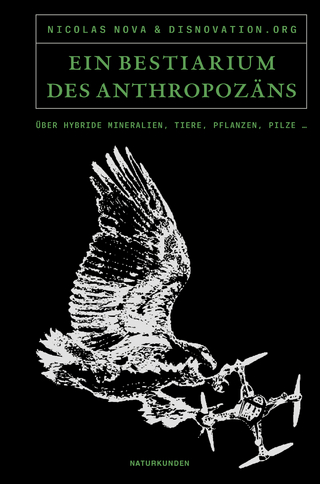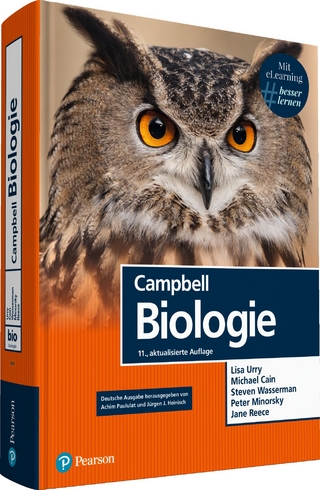
She Has Her Mother's Laugh
Dutton (Verlag)
978-1-101-98461-1 (ISBN)
One of Publishers Weekly's Top Ten Books of 2018
"Extraordinary"-New York Times Book Review
"Magisterial"-The Atlantic
"Engrossing"-Wired
"Leading contender as the most outstanding nonfiction work of the year"-Minneapolis Star-Tribune
Award-winning, celebrated New York Times columnist and science writer Carl Zimmer presents a profoundly original perspective on what we pass along from generation to generation. Charles Darwin played a crucial part in turning heredity into a scientific question, and yet he failed spectacularly to answer it. The birth of genetics in the early 1900s seemed to do precisely that. Gradually, people translated their old notions about heredity into a language of genes. As the technology for studying genes became cheaper, millions of people ordered genetic tests to link themselves to missing parents, to distant ancestors, to ethnic identities...
But, Zimmer writes, "Each of us carries an amalgam of fragments of DNA, stitched together from some of our many ancestors. Each piece has its own ancestry, traveling a different path back through human history. A particular fragment may sometimes be cause for worry, but most of our DNA influences who we are-our appearance, our height, our penchants-in inconceivably subtle ways." Heredity isn't just about genes that pass from parent to child. Heredity continues within our own bodies, as a single cell gives rise to trillions of cells that make up our bodies. We say we inherit genes from our ancestors-using a word that once referred to kingdoms and estates-but we inherit other things that matter as much or more to our lives, from microbes to technologies we use to make life more comfortable. We need a new definition of what heredity is and, through Carl Zimmer's lucid exposition and storytelling, this resounding tour de force delivers it.
Weaving historical and current scientific research, his own experience with his two daughters, and the kind of original reporting expected of one of the world's best science journalists, Zimmer ultimately unpacks urgent bioethical quandaries arising from new biomedical technologies, but also long-standing presumptions about who we really are and what we can pass on to future generations.
PROLOGUE The worst scares of my life have usually come in unfamiliar places. I still panic a bit when I remember traveling into a Sumatran jungle only to discover my brother, Ben, had dengue fever. I lose a bit of breath any time I think about a night in Bujumbura when a friend and I got mugged. My fingers still curl when I recall a fossil-mad paleontologist leading me to the slick mossy edge of a Newfoundland cliff in search of Precambrian life. But the greatest scare of all, the one that made the world suddenly unfamiliar, swept over me while I was sitting with my wife, Grace, in the comfort of an obstetrician's office. Grace was pregnant with our first child, and our obstetrician had insisted we meet with a genetics counselor. We didn't see the point. We felt untroubled in being carried along into the future, wherever we might end up. We knew Grace had a second heartbeat inside her, a healthy one, and that seemed enough to know. We didn't even want to find out if the baby was a girl or a boy. We would just debate names in two columns: Liam or Henry, Charlotte or Catherine. Still, our doctor insisted. And so one afternoon we went to an office in lower Manhattan, where we sat down with a middle-aged woman, perhaps a decade older than us. She was cheerful and clear, talking about our child's health beyond what the thrum of a heartbeat could tell us. We were politely cool, wanting to end this appointment as soon as possible. We had already talked about the risks we faced starting a family in our thirties, the climbing odds that our children might have Down syndrome. We agreed that we'd deal with whatever challenges our child faced. I felt proud of my commitment. But now, when I look back at my younger self, I'm not so impressed. I didn't know anything at the time about what it's actually like raising a child with Down syndrome. A few years later, I would get to know some parents who were doing just that. Through them, I would get a glimpse of that life: of round after round of heart surgeries, of the struggle to teach children how to behave with outsiders, of the worries about a child's future after one's own death. But as we sat that day with our genetics counselor, I was still blithe, still confident. The counselor could tell we didn't want to be there, but she managed to keep the conversation alive. Down syndrome was not the only thing expectant parents should think about, she said. It was possible that the two of us carried genetic variations that we could pass down to our child, causing other disorders. The counselor took out a piece of paper and drew a family tree, to show us how genes were inherited. "You don't have to explain all that to us," I assured her. After all, I wrote about things like genes for a living. I didn't need a high school lecture. "Well, let me ask you a little about your family," she replied. It was 2001. A few months beforehand, two geneticists had come to the White House to stand next to President Bill Clinton for an announcement. "We are here to celebrate the completion of the first survey of the entire human genome," Clinton said. "Without a doubt, this is the most important, most wondrous map ever produced by humankind." The "entire human genome" that Clinton was hailing didn't come from any single person on Earth. It was an error-ridden draft, a collage of genetic material pieced together from a mix of people. And it had cost $3 billion. Rough as it was, however, its completion was a milestone in the history of science. A rough map is far better than no map at all. Scientists began to compare the human genome to the genomes of other species, in order to learn on a molecular level how we evolved from common ancestors. They could examine the twenty thousand-odd genes that encode human proteins, one at a time, to learn about how they helped make a human and how they helped make us sick. In 2001, Grace and I couldn't ex
| Erscheinungsdatum | 27.05.2019 |
|---|---|
| Verlagsort | London |
| Sprache | englisch |
| Maße | 156 x 234 mm |
| Gewicht | 641 g |
| Themenwelt | Naturwissenschaften ► Biologie ► Allgemeines / Lexika |
| Naturwissenschaften ► Biologie ► Evolution | |
| Naturwissenschaften ► Biologie ► Genetik / Molekularbiologie | |
| ISBN-10 | 1-101-98461-9 / 1101984619 |
| ISBN-13 | 978-1-101-98461-1 / 9781101984611 |
| Zustand | Neuware |
| Haben Sie eine Frage zum Produkt? |
aus dem Bereich


